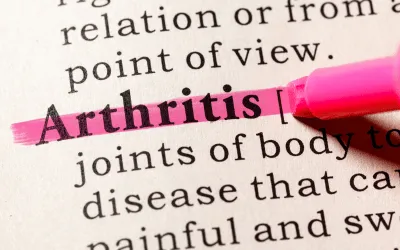About Arthritis
As the nation’s #1 cause of disability, arthritis affects nearly 60 million adults and 300,000 children. Over 100 types of arthritis and related conditions damage the joints and often other organs.
How can we assist you?
Helpful Tools for You

New Insights Into Migraine Treatment for Older Adults: Balancing Risks and Benefits
Exciting new research sheds light on the safety of second-generation triptans—popular migraine medications—for adults aged 65 and older. The findings provide important guidance for tailoring migraine care in this population, especially for those managing other health conditions, including arthritis.
Study Findings on Migraine Medications
The study investigated whether using triptans increases the risk of cardiovascular events, such as strokes or heart issues, in older adults. While researchers noted a slightly higher risk of vascular events among triptan users compared to non-users, the overall risk remains relatively low. This underscores the need for personalized care and vigilant monitoring, particularly for older individuals with pre-existing medical conditions.
What This Means for Those With Arthritis
This research is especially relevant for older adults managing arthritis, as many also experience migraines. With arthritis and cardiovascular conditions often coexisting in this age group, understanding the potential risks associated with migraine treatments is critical.
The study's authors emphasized that "migraine treatment in the older population requires careful consideration of increased medical comorbidities." This statement highlights the importance of integrating treatment strategies that address the complexities of managing multiple chronic conditions.
Taking a Holistic Approach to Care
For older adults juggling arthritis, migraines, and other health challenges, informed decision-making is key. Healthcare providers can help by considering an individual’s unique medical history and carefully weighing the risks and benefits of migraine treatments like triptans.
Tailored care plans may include alternative therapies or additional monitoring to ensure safety and effectiveness. By focusing on the whole person, rather than isolated conditions, we can better support older adults in living healthier, more fulfilling lives.
Advocating for Awareness and Education
At the American Arthritis Foundation, we are committed to empowering individuals through education and advocacy. Understanding the latest research, like this study on migraine treatments, helps patients and caregivers make informed choices for their health journey.
As we continue to learn more about how different conditions and treatments interact, let’s advocate for care that addresses the unique needs of older adults managing arthritis, migraines, and other chronic conditions.
Effects of Arthritis

Cause of Disability
In the United States, 23% of all adults, or more than 54 million people, have arthritis. It is a leading cause of work disability, with annual costs for medical care and lost earnings of $303.5 billion.

Workforce Effects
Sixty percent of US adults with arthritis are of working age (18 to 64 years). Arthritis can limit the type of work they are able to do or keep them from working at all.

Global Impact
In fact, 8 million working-age adults report that their ability to work is limited because of their arthritis. For example, they may have a hard time climbing stairs or walking from a parking deck to their workplace.
Promoting Interventions That Reduce Arthritis Pain
American Arthritis Foundation recognizes several proven approaches to reduce arthritis symptoms:
Be active. Physical activity—such as walking, bicycling, and swimming—decreases arthritis pain and improves function, mood, and quality of life. Adults with arthritis should move more and sit less throughout the day. Getting at least 150 minutes of moderate-intensity physical activity each week is recommended.
Protect your joints. People can help prevent osteoarthritis by avoiding activities that are more likely to cause joint injuries.
Talk with a doctor. Recommendations from health care providers can motivate people to be physically active and join a self-management education program. Should your arthritis be interfering with your activities of daily living you may be a candidate to receive many new treatments, and learn how to reverse the arthritis condition.
Have a question?
We're Here to Help
By providing my phone number, I agree to receive text messages from the business.


